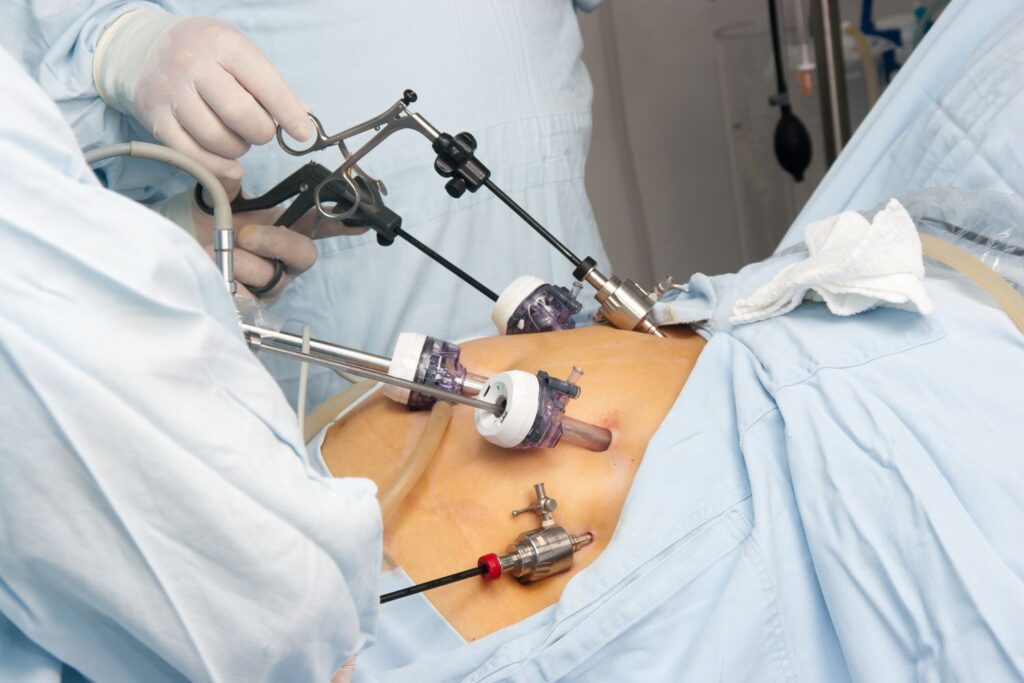Bariatric Surgery

Gastric bypass and other types of weight-loss surgery — also called bariatric or metabolic surgery — involve making changes to your digestive system to help you lose weight.
Bariatric surgery is done when diet and exercise haven’t worked or when you have serious health problems because of your weight. Some weight-loss procedures limit how much you can eat. Others work by reducing the body’s ability to absorb fat and calories. Some procedures do both.
While bariatric surgery can offer many benefits, all forms of weight-loss surgery are major procedures that can pose risks and side effects. Also, you must make permanent healthy changes to your diet and get regular exercise to help ensure the long-term success of bariatric surgery
Why it's done
Bariatric surgery is done to help you lose extra weight and reduce your risk of possibly life-threatening weight-related health problems, including:
- Certain cancers, including breast, endometrial and prostate cancer.
- Heart disease and stroke.
- High blood pressure.
- High cholesterol levels.
- Nonalcoholic fatty liver disease (NAFLD) or nonalcoholic steatohepatitis (NASH).
- Sleep apnea.
- Type 2 diabetes.
Bariatric surgery is often done only after you’ve tried to lose weight by improving your diet and exercise habits.
Who it’s for
In general, bariatric surgery could be an option for you if:
- Your body mass index (BMI) is 40 or higher, called extreme obesity.
- Your BMI is 35 to 39.9, called obesity, and you have a serious weight-related health problem, such as type 2 diabetes, high blood pressure or severe sleep apnea. In some cases, you may qualify for certain types of weight-loss surgery if your BMI is 30 to 34 and you have serious weight-related health problems.
Bariatric surgery isn’t for everyone who is severely overweight. You may need to meet certain medical guidelines to qualify for weight-loss surgery. You likely will have an extensive screening process to see if you qualify. You also must be willing to make permanent changes to lead a healthier lifestyle.
You may be required to participate in long-term follow-up plans that include keeping track of your nutrition, your lifestyle and behavior, and your medical conditions.
And keep in mind that bariatric surgery is expensive. Check with your health insurance plan or your regional Medicare or Medicaid office to find out if your policy covers such surgery.
Types of bariatric surgery
Each type of bariatric surgery has pros and cons. Be sure to talk to your doctor about them. Here’s a look at common types of bariatric surgery:
Roux-en-Y (roo-en-wy) gastric bypass. This procedure is the most common method of gastric bypass. This surgery is typically not reversible. It works by decreasing the amount of food you can eat at one sitting and reducing absorption of fat and calories.
The surgeon cuts across the top of the stomach, sealing it off from the rest of the stomach. The resulting pouch is about the size of a walnut and can hold only about an ounce of food. Typically, the stomach can hold about 3 pints of food.
Then, the surgeon cuts the small intestine and sews part of it directly onto the pouch. Food goes into this small pouch of stomach and then directly into the small intestine sewn to it, bypassing most of the stomach and the first section of the small intestine. Instead, food goes directly into the middle part of the small intestine.
Sleeve gastrectomy. With sleeve gastrectomy, about 80% of the stomach is removed, leaving a long, tube-like pouch. This smaller stomach can’t hold as much food. It also produces less of the appetite-regulating hormone ghrelin, which may lessen the desire to eat.
Advantages to this procedure include significant weight loss and no rerouting of the intestines. Sleeve gastrectomy also requires a shorter hospital stay than do most other procedures.
Biliopancreatic diversion with duodenal switch (BPD/DS). This is a two-part surgery usually performed in one setting. The first step involves performing a sleeve gastrectomy.
During the second step, the surgeon closes off the middle section of the intestine and attaches the last part directly to the first part of the small intestine, called the duodenum. This is the duodenal switch. The separated section of the intestine isn’t removed from the body. Instead, it’s reattached to the end of the intestine, allowing bile and pancreatic digestive juices to flow into this part of the intestine. This is the biliopancreatic diversion.
This surgery both limits how much you can eat and reduces the absorption of nutrients. While it is extremely effective, it has greater risk, including malnutrition and vitamin deficiencies.
Single-anastomosis duodeno-ileal bypass with sleeve gastrectomy (SADI-S). Like BPD/DS, the SADI-S procedure also has two steps, with the first step being a sleeve gastrectomy.
During the second step of the SADI-S procedure, a section of the small intestine known as the duodenum is closed off just below the new stomach sleeve. This opening below the new stomach is then connected to a part of the lower small intestine called the ileum. This is the duodeno-ileal bypass.
The bypass routes food through only about 10 feet of the small intestine, instead of the usual 25. This means there is less time and distance for the body to absorb fat and calories.
Which type of weight-loss surgery is best for you depends on your specific situation. Your surgeon will take many factors into account, including body mass index, eating habits, other health issues, previous surgeries and the risks involved with each procedure.
